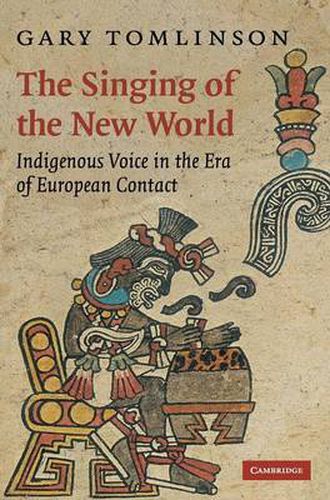Readings Newsletter
Become a Readings Member to make your shopping experience even easier.
Sign in or sign up for free!
You’re not far away from qualifying for FREE standard shipping within Australia
You’ve qualified for FREE standard shipping within Australia
The cart is loading…






In The Singing of the New World Gary Tomlinson offers histories of ancient music long since silent: the songs of the Indians that Europeans met in the sixteenth century. Merging recent cultural history, early European accounts, archaeological findings, and rare indigenous documents for the Mexica (or Aztecs), the Incas, and the Tupinamba of lowland Brazil, Tomlinson explores the place of singing in these societies. He details the expressive and ritual ends it was expected to fulfil before and after the coming of the conquistadors. Musical practices and the cultural ends they served come alive across a spectrum that reaches from the cosmogonic geometry of Inca ritual song through the imminent sacred materiality of Mexican cantares to the intricate interconnections of singing, speaking and eating in Tupinamba cannibalism. A final chapter considers the fears mutually and repeatedly inspired by the expressive powers of American and European song.
$9.00 standard shipping within Australia
FREE standard shipping within Australia for orders over $100.00
Express & International shipping calculated at checkout
In The Singing of the New World Gary Tomlinson offers histories of ancient music long since silent: the songs of the Indians that Europeans met in the sixteenth century. Merging recent cultural history, early European accounts, archaeological findings, and rare indigenous documents for the Mexica (or Aztecs), the Incas, and the Tupinamba of lowland Brazil, Tomlinson explores the place of singing in these societies. He details the expressive and ritual ends it was expected to fulfil before and after the coming of the conquistadors. Musical practices and the cultural ends they served come alive across a spectrum that reaches from the cosmogonic geometry of Inca ritual song through the imminent sacred materiality of Mexican cantares to the intricate interconnections of singing, speaking and eating in Tupinamba cannibalism. A final chapter considers the fears mutually and repeatedly inspired by the expressive powers of American and European song.